Hi HN, founder here again!
I first launched ToolJet here in 2021 as a one-person project. It blew up really well & got 1k stars on GitHub (https://github.com/ToolJet/ToolJet/) in around 8 hours. Back then ToolJet was basically a frontend builder that could connect to different data sources.
Since then, we kept expanding:
– Added a workflow automation tool so builders could orchestrate background jobs.
– Added a built-in no-code database so builders didn’t need to spin up a new db.
– Eventually grew into a full-stack platform for internal tools.
– And other obvious things like tons of smaller features & integrations.
But last year we kind of messed up. We kept adding features, the frontend architecture couldn’t keep up, and stability/performance issues showed up once apps got complex (ie hundreds of UI components in a single page of an app). So we stopped, rebuilt the architecture (ToolJet v3 in November), and cleaned up a lot of tech debt. That gave us a solid foundation – and also made us realize it was the right moment to go AI-native.
We analyzed how our users actually built apps: 80% of the time on repetitive setup (forms, tables, CRUD), 15% on integration glue code, 5% on actual business logic. Traditional low-code tried to eliminate code entirely. We’re eliminating the wrong code – the boring 95% – while keeping full control for the 5% that matters.
Instead of “prompt-to-code,” ToolJet AI tries to copy how an engineering team functions (yeah, a bit opinionated way) – but with AI agents:
– PM agent → turns your prompt into a PRD.
– Design agent → generated the the UI using our pre-built components and custom components.
– DB agent → builds the schema.
– Full-stack agent → wires it all up with queries, event handlers, and code.
At each step, builders can review/edit, stop AI generation, or switch into the visual builder. Generated apps aren’t locked in – you can keep tweaking with prompts, drag-and-drop, or extend with custom code.
Why this works:
We know “AI builds apps” is overhyped right now. The difference: we’re not generating raw code – we’re configuring battle-tested components. Think Terraform for internal tools, not Claude/GPT writing React.
That means:
– Fewer tokens → lower cost.
– Deterministic & Faster outputs → fewer errors.
– More reliability → production-ready apps.
Basically, AI is filling in blueprints.
ToolJet AI is a closed-source fork of the open-source community edition, which will continue to be actively maintained. All the core platform changes (like the v3 rebuild and stability/performance work) are committed upstream. The AI features sit on top, but OSS remains the foundation.
Thanks for reading – and thanks again to HN for being part of ToolJet’s journey since the very beginning.
Comments URL: https://news.ycombinator.com/item?id=45345277
Points: 1
# Comments: 0
Source: www.tooljet.ai


